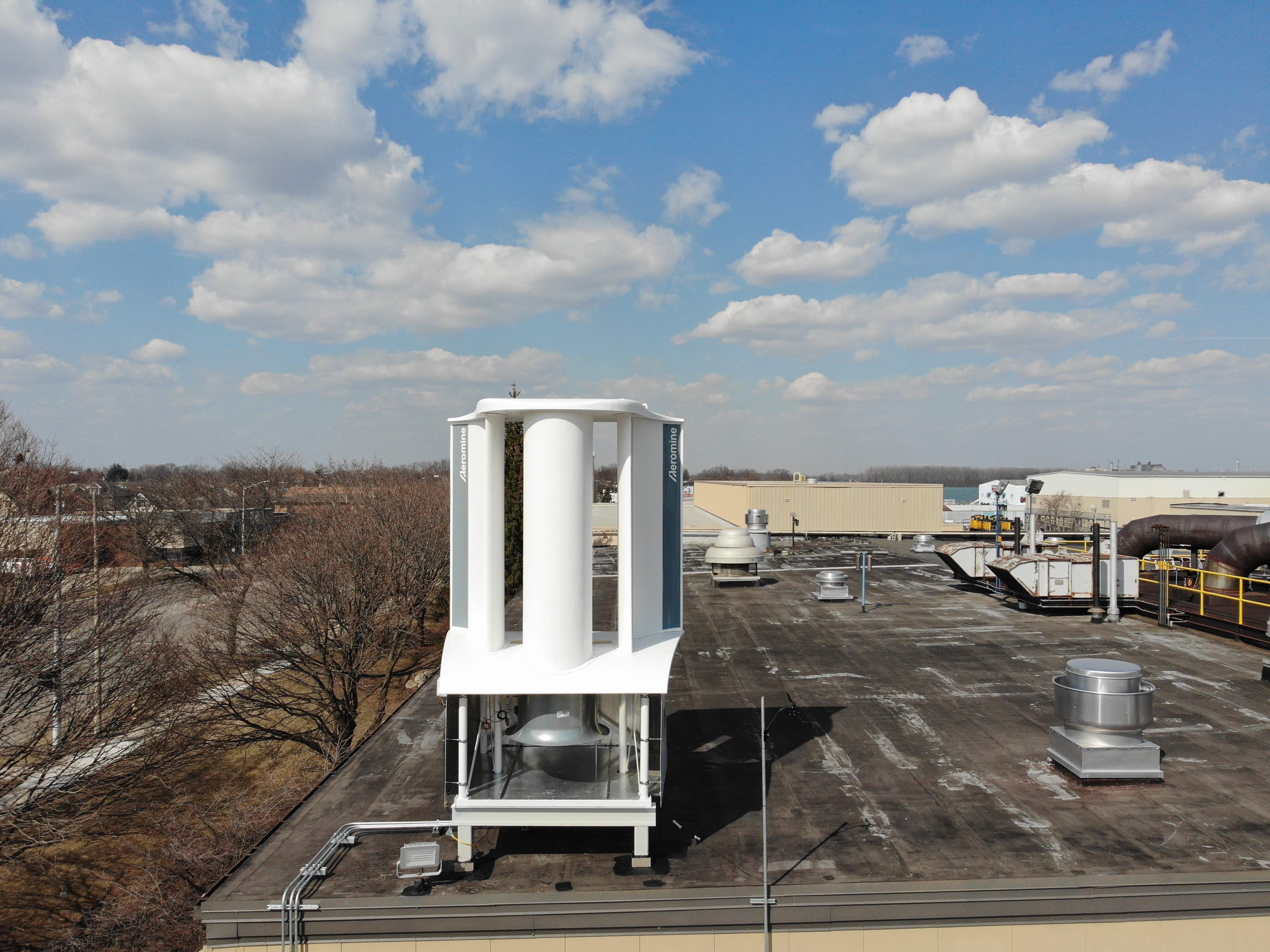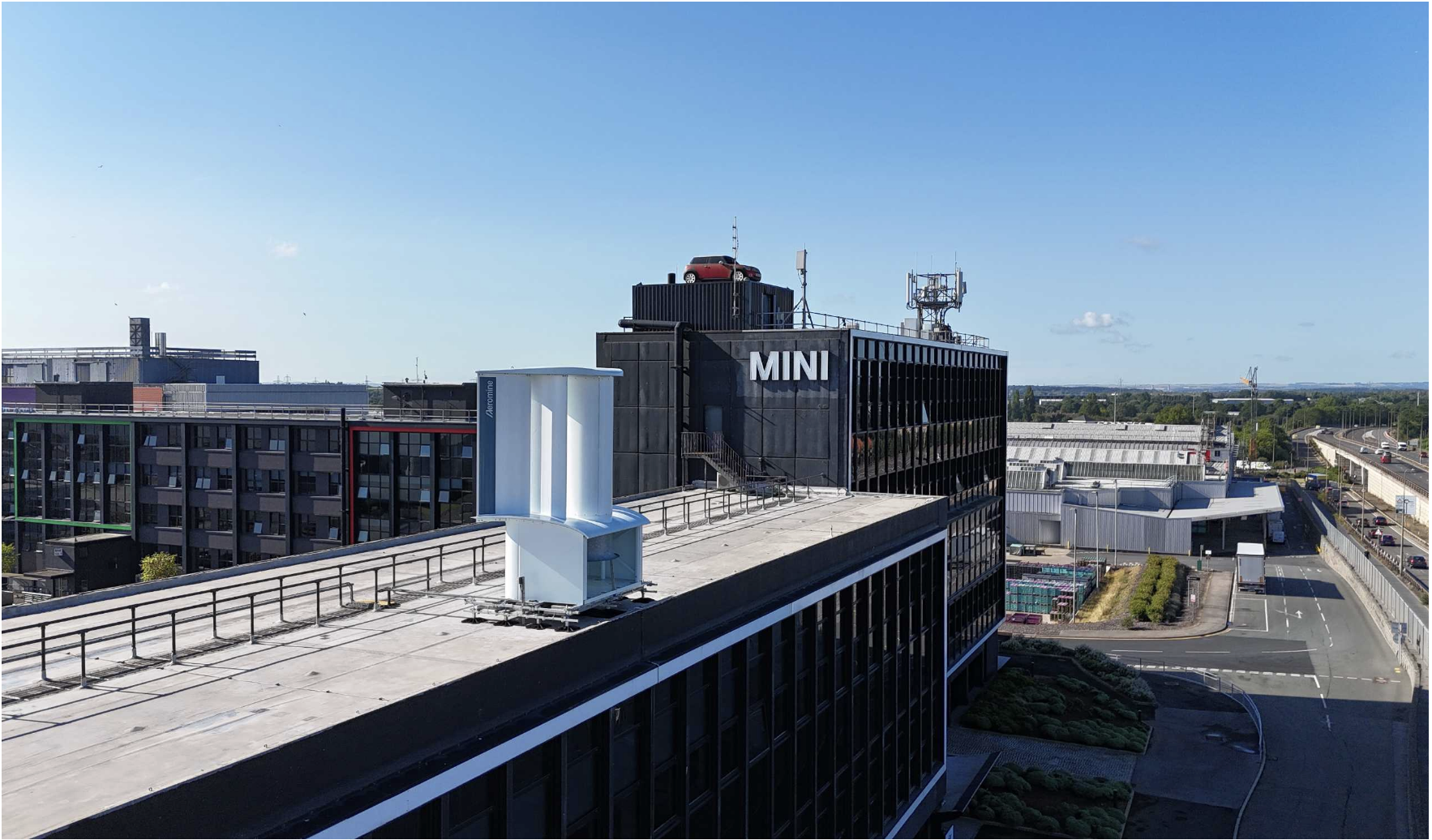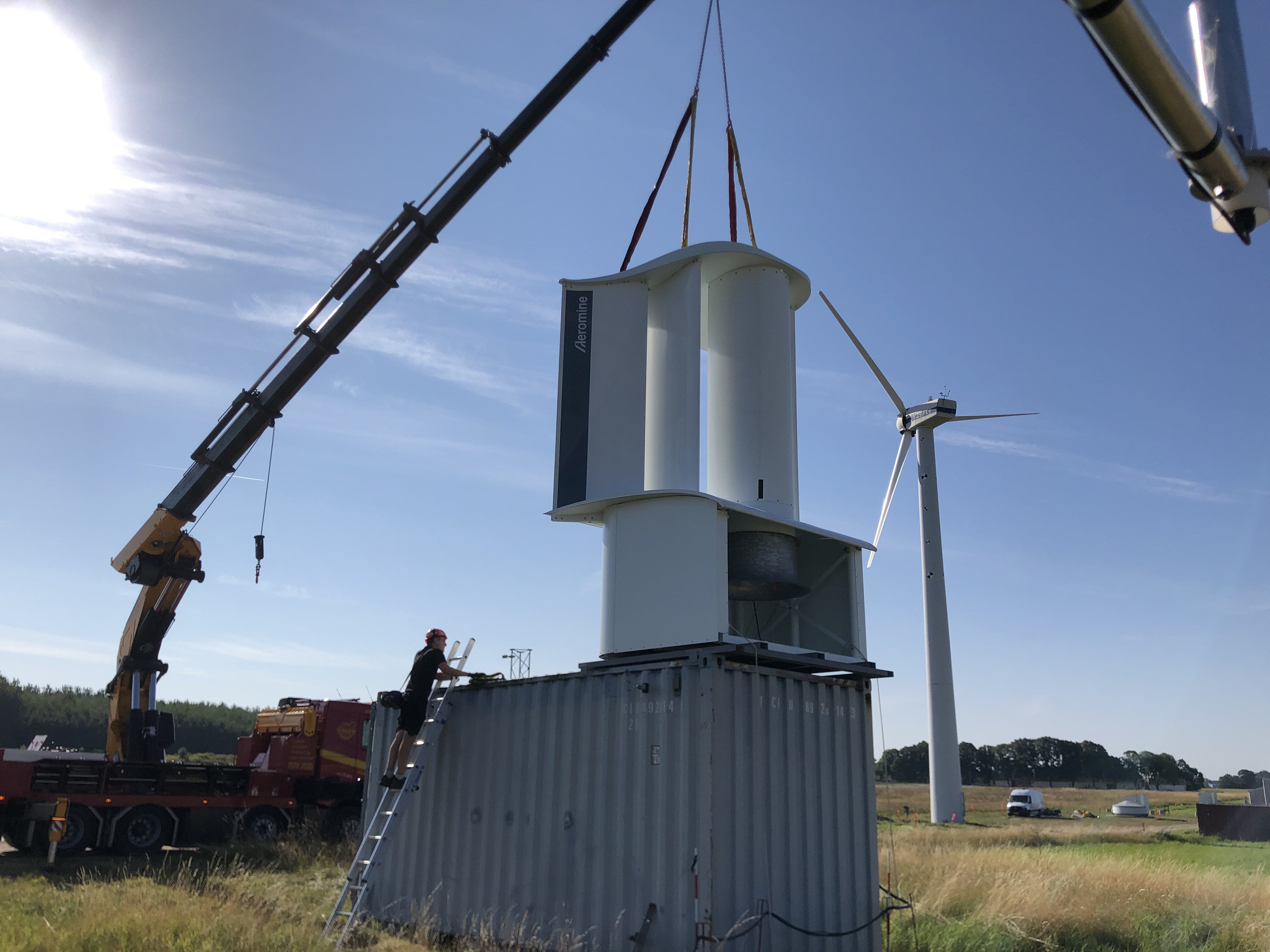July 8, 2025 by Claus Lønborg
As the world races toward a sustainable future, renewable energy sources like wind and solar power are at the forefront of the transition. While solar energy has dominated the renewable energy in the built environment, Aeromine’s innovative motionless wind energy system—designed for large buildings like warehouses, data centers, and apartment complexes—is emerging as a powerful contender. But is it really competing against solar? Or is it rather to be seen as a complementary energy source? Let’s dive in.
In Aeromine Technologies, we are finalizing developments are preparing to launch our motionless wind energy system. We often get the question whether we are to be seen as a substitution to solar power or a complementary source. Aeromine’s wind energy system and solar power share a common goal: harnessing nature’s power sustainably. So it really depends on the location and the availability of wind and solar. But in almost all cases, Aeromine’s technology can work alongside solar to create a more resilient energy mix. Here’s how they complement each other:
1. Temporal Synergy: Different Peak Times
- Solar: Solar panels thrive during the day, peaking at midday sunlight where the sun is high on the sky.
- Aeromine: Aeromine’s system generates power whenever wind speeds exceed 3,5 m/s (5 mph), often peaking later in the afternoon – and providing power at night when solar output drops.
- By pairing them, buildings can generate power more consistently, reducing reliance on grid or storage systems. For example, a study from the National Renewable Energy Laboratory (NREL) found that hybrid wind-solar systems can reduce energy storage needs by up to 20% due to their complementary generation patterns.
2. Space Optimization: Urban Constraints
- Aeromine units are only installed along the edge of flat rooftops facing the predominant wind direction. It leaves ample space for solar panels, maximizing energy output per square meter.
- Further, Aeromine’s compact, 3x3m (10-by-10-foot) can provide a signifant higher energy output than solar on a similar footprint. A single Aeromine unit, rated at 5 kW, delivers the same power as approximately 16 solar panels.
3. Energy Resilience: Seasonal Diversification
- Solar depends on clear skies, while Aeromine’s system operates in diverse weather conditions. In fact, wind is often stronger when the sky is clouded or during fall and winter where days may be short and gray.
- This diversification strengthens energy security for buildings, especially in regions prone to variable weather and seasonal variations where solar may be the main contributor during summer and Aeromine during fall and winter.
4. Aesthetic and Functional Integration:
- Aeromine’s sleek, motionless design, with no external moving parts, blends seamlessly with building architecture, complementing the aesthetic appeal of solar panels. Its silent operation and lack of vibration make it ideal for urban settings, avoiding the noise or visual intrusion of traditional turbines.
In our view - one technology does not overshadow the other, and the future likely lies in hybrid systems that leverage the strengths of both Aeromine and solar. Smart energy management systems, powered by AI, can optimize when to draw from Aeromine’s wind energy or solar based on real-time conditions, maximizing efficiency and cost savings. Aeromine’s proprietary tools for assessing wind resources on specific buildings further enhance this synergy by optimizing hybrid system design.
For building owners and developers, the message is clear: don’t choose between Aeromine and solar—embrace both. By integrating these technologies, we can create energy-resilient cities that harness the full spectrum of nature’s power.
Source: https://www.linkedin.com/pulse/aeromine-wind-energy-built-environment-complementing-solar-l%C3%B8nborg-wwxif/


